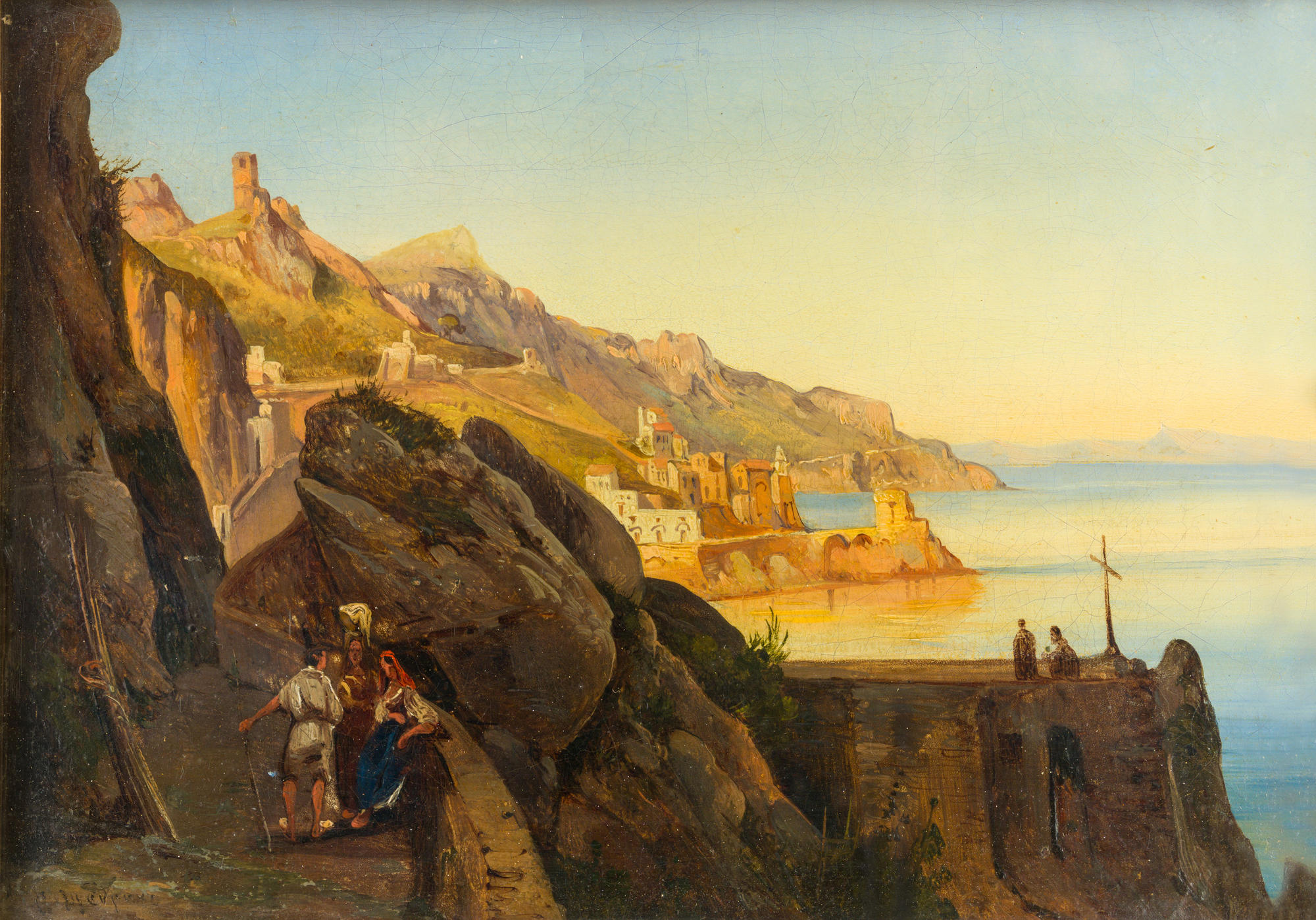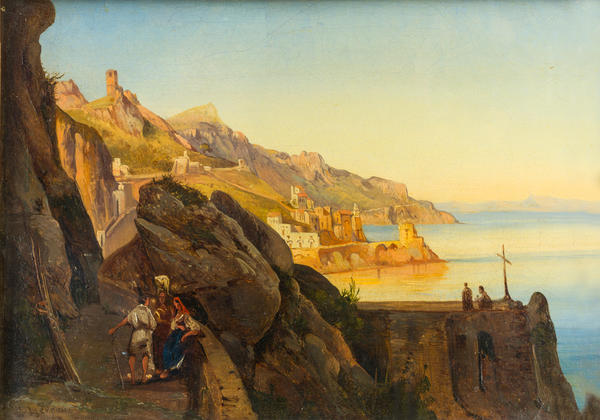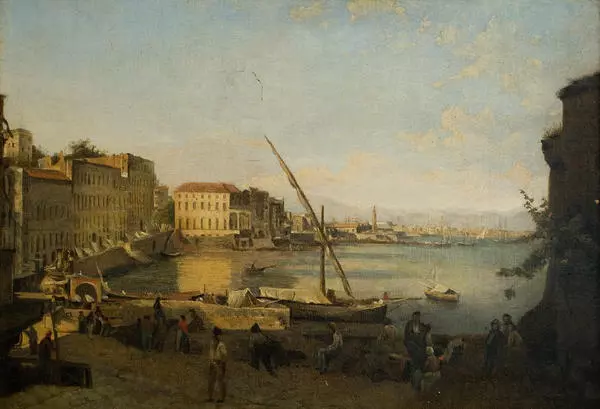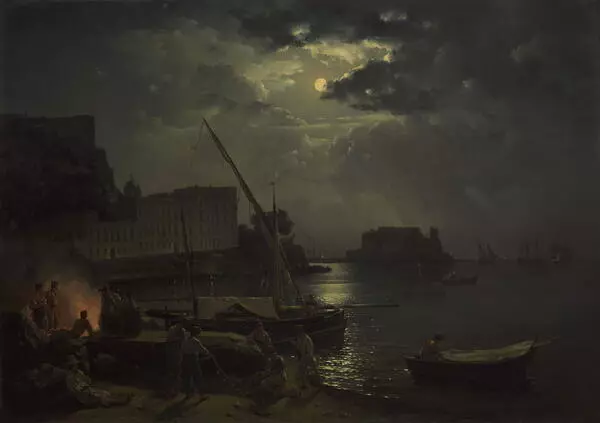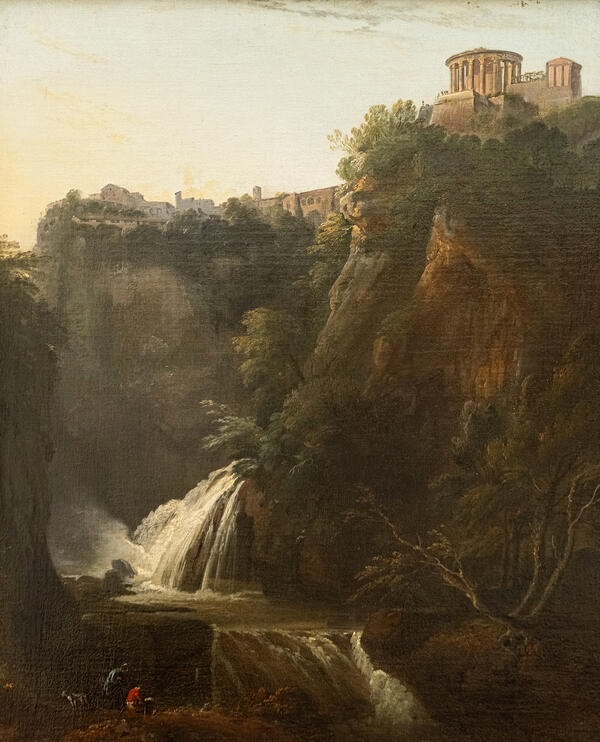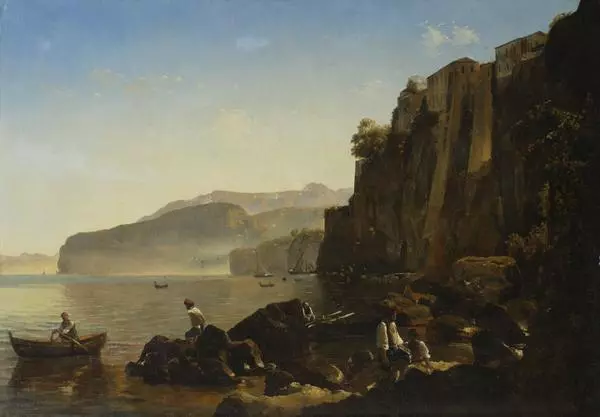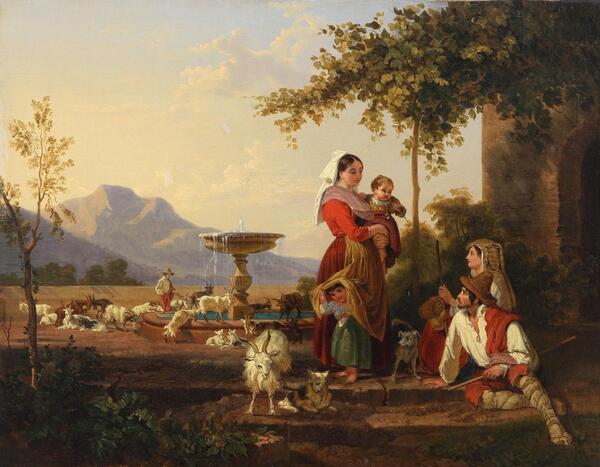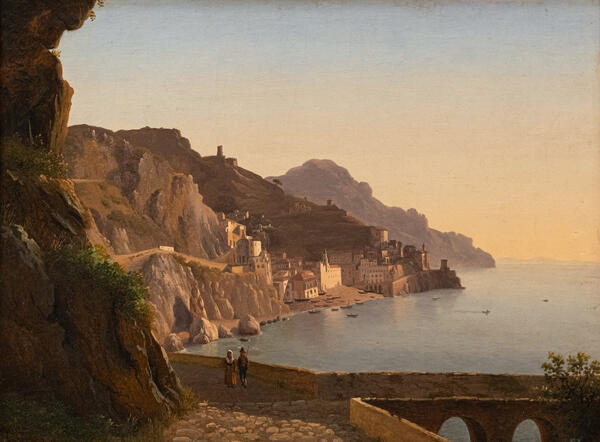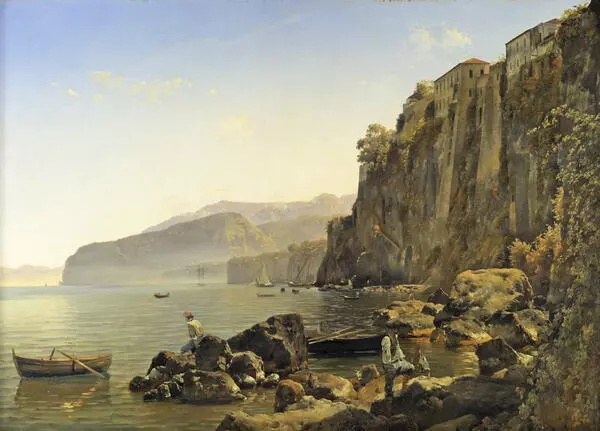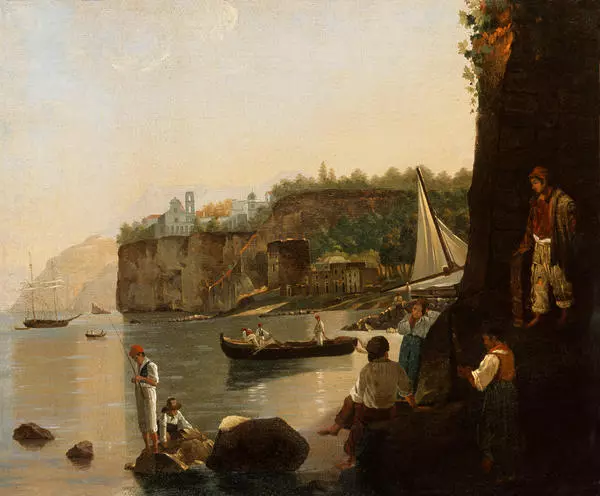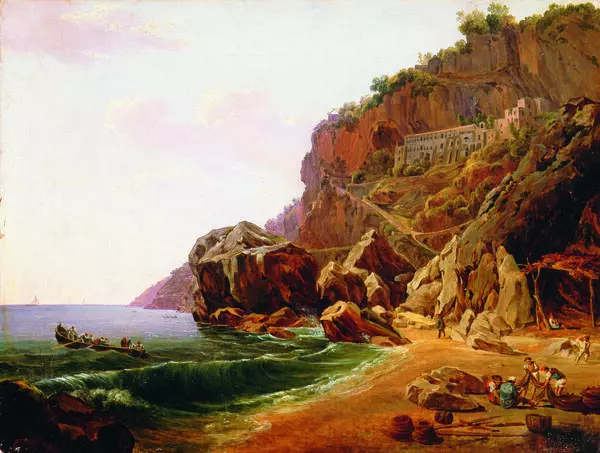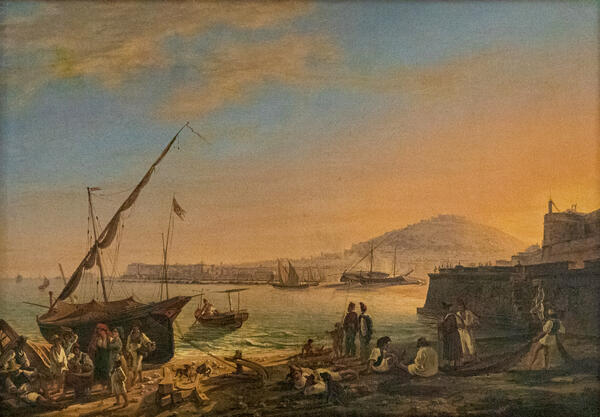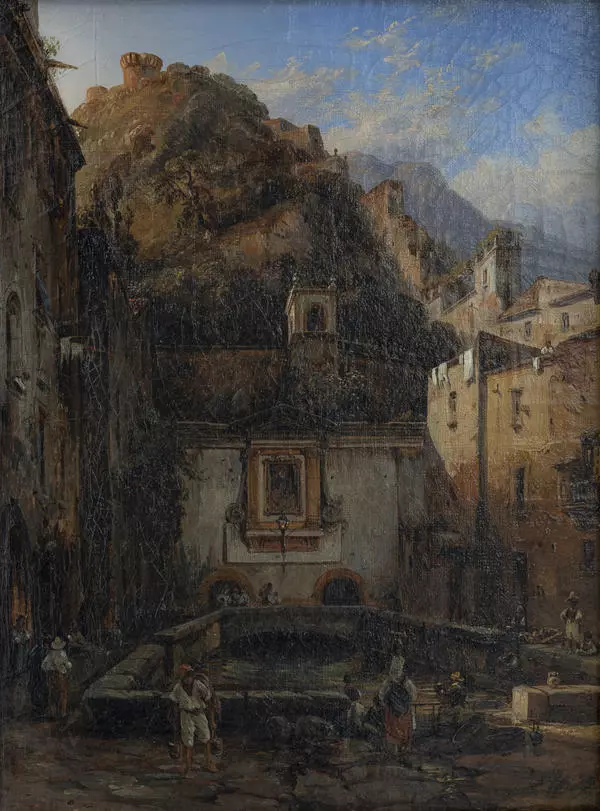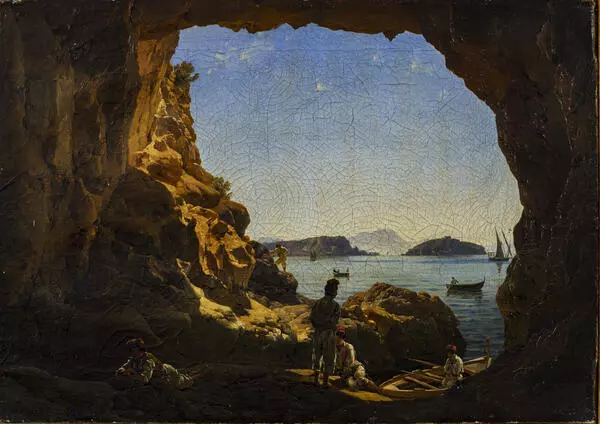Works by Silvester Feodosievich Shchedrin (1791 – 1830) were the conclusion of the period of Romanticism that associated with paintings of such renowned artists as Orest Kiprensky and Alexander Orlovsky.
Sponsored by the St. Petersburg Academy of Arts, Silvester Shchedrin spent the last ten years of his life in Italy. There he painted pictures filled with high-minded characters and remarkable serenity.
His painting A Harbor in Sorrento, like many other works by the painter, is dedicated to most beautiful parts of Italy. There Silvester Shchedrin admired the riches of nature, breathed sea air, made sketches from life of common people.
The painting arouses sensation of happiness and tranquility. In the foreground we see figures of two young ladies and a man who stopped for a chat on a mountain road. The young man seems to be telling the girls something interesting; their postures express attention and even playfulness.
The rest of the picture demonstrates the beauty of nature and harmonious combination of Sorrento architecture and mountain landscapes. The serenity is not interrupted either by the two people talking near the cross, or by the depth of the sky, or by the ideally smooth water surface.
The years spent in Italy were the best period in the creative life of the painter. He believed that the local nature was a paradise for a landscape artist, and was trying to find the way to capture all its riches in his paintings.
Shchedrin’s desire to capture life intenseness and landscape beauty, to most precisely depict the reality resulted in his decision to paint in the open air. He was the first Russian artist who started to work in the genre of open-air painting. Silvester Shchedrin had a studio, but he only concluded his works there, applying finishing touches.
Transition to open-air painting was not that simple as it may seem when one looks at the artist’s paintings. Shchedrin had to totally change the conceptual principle of the landscape. The first successful result of his pursuits was his picture New Rome. The St. Angel’s Castle painted in 1824. Painters used to focus on architectural monuments and sculptures, but Silvester Shchedrin elected not to hold the traditions: in his works those items were of equal value with other elements of the painting. Silvester Shchedrin, enthusiastically looking for artistic reality, perceived any Italian landscape as a true reflection of the joy of life.
Sponsored by the St. Petersburg Academy of Arts, Silvester Shchedrin spent the last ten years of his life in Italy. There he painted pictures filled with high-minded characters and remarkable serenity.
His painting A Harbor in Sorrento, like many other works by the painter, is dedicated to most beautiful parts of Italy. There Silvester Shchedrin admired the riches of nature, breathed sea air, made sketches from life of common people.
The painting arouses sensation of happiness and tranquility. In the foreground we see figures of two young ladies and a man who stopped for a chat on a mountain road. The young man seems to be telling the girls something interesting; their postures express attention and even playfulness.
The rest of the picture demonstrates the beauty of nature and harmonious combination of Sorrento architecture and mountain landscapes. The serenity is not interrupted either by the two people talking near the cross, or by the depth of the sky, or by the ideally smooth water surface.
The years spent in Italy were the best period in the creative life of the painter. He believed that the local nature was a paradise for a landscape artist, and was trying to find the way to capture all its riches in his paintings.
Shchedrin’s desire to capture life intenseness and landscape beauty, to most precisely depict the reality resulted in his decision to paint in the open air. He was the first Russian artist who started to work in the genre of open-air painting. Silvester Shchedrin had a studio, but he only concluded his works there, applying finishing touches.
Transition to open-air painting was not that simple as it may seem when one looks at the artist’s paintings. Shchedrin had to totally change the conceptual principle of the landscape. The first successful result of his pursuits was his picture New Rome. The St. Angel’s Castle painted in 1824. Painters used to focus on architectural monuments and sculptures, but Silvester Shchedrin elected not to hold the traditions: in his works those items were of equal value with other elements of the painting. Silvester Shchedrin, enthusiastically looking for artistic reality, perceived any Italian landscape as a true reflection of the joy of life.
